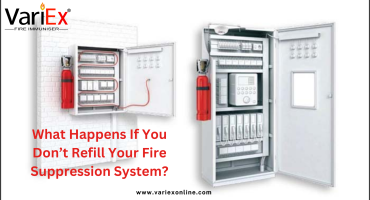![]()
Fire Immuniser
+91-7829629111
Email: info@variex.in
Varistor Technologies Pvt. Ltd.
Block-1, First Floor, Ardente Office One, Hoodi Circle, ITPL Main Road, Bengaluru, Karnataka 560048, IN
How Works Fire Alarm
How Works Fire Alarm
For centuries, fire has been a significant hazard that has caused countless damage and losses to personal and commercial property, and in some instances, even to human lives. Thankfully, constant advancements in technology over the last few decades have led to the development of fire alarm systems that are highly effective in detecting signs of a possible fire outbreak. These devices are not only critical in ensuring the safety of properties but also in saving lives. This article will delve into the nuts and bolts of how fire alarms work, offering an easy-to-understand explanation for anyone interested in learning more about this pivotal safety system.
The Essential Components of a Fire Alarm System
Though relatively small in size, a fire alarm system is an intricate collection of devices intricately working in unison. It typically consists of a control panel, detectors, manual pull stations, notification devices, and sometimes fire sprinkler system interfaces. The control panel is the system's brain, receiving signals from detectors and initiating responses. Detectors are either heat or smoke detectors. Manual pull stations are human-activated devices designed to involve occupants in the safety process, while notification devices alert occupants of an impending emergency. The fire sprinkler system interfaces connect the alarm system to the fire sprinkler systems to offer a comprehensive approach to fire safety.
Working Principle of Fire Alarm Systems
At the heart of a fire alarm system are detectors, which essentially work as the system's eyes and ears. These detectors could be heat detectors, smoke detectors, or a combination of both. Smoke detectors are often the first line of defense against fires, detect the smoke produced by a fire, and trigger the alarm. They accomplish this by utilizing two primary detection techniques: ionization and photoelectric detection.
Ionization Smoke Detectors
Ionization smoke detectors contain a small amount of radioactive material that ionizes the air in an inner chamber, creating a current. This current flows between two electrically charged plates. When smoke enters the chamber, it disrupts the current, setting off the alarm. An ionization detector responds swiftly to flaming, fast-moving fires but can be slower to detect slower, smoldering fires that generate heavier smoke particles.
 Photoelectric Smoke Detectors
Photoelectric Smoke Detectors
Photoelectric smoke detectors, meanwhile, employ a light beam and a sensor. In a regular scenario, the light beam doesn't hit the sensor directly. However, when smoke enters the chamber, the smoke particles scatter the beam, making some light hit the sensor, thus activating the alarm. Photoelectric detectors excel in detecting smoldering fires that generate heavier smoke particles but may not respond as swiftly to flaming fires.
Heat Detectors
Unlike smoke detectors, heat detectors work by monitoring the ambient temperature. There are two main types of heat detectors: "rate-of-rise" and "fixed temperature." Rate-of-rise detectors sound the alarm when they detect a quick, sharp increase in temperature, while a fixed-temperature detector goes off when a specific temperature threshold is reached.
Notification Devices
Once a detector has been triggered, it sends a signal to the control panel, which activates the notification devices. These can include things like audible sirens or bells and visual alert systems like flashing lights. In more advanced systems, the alarm can also trigger the automatic shutdown of certain utilities, such as gas lines, to minimize the risk of the fire spreading.
Fire Sprinkler System
In commercial premises, the fire alarm system may also interface with the fire sprinkler system. Upon detection of a fire, not only do the notification devices go off, but the sprinkler system is also triggered. This system douses the area with water, therefore, serving an additional active fire-fighting role, potentially minimizing the damage before rescue services arrive.
Conclusion
Fire alarm systems represent important achievements in technology dedicated to fire safety. By relying on precise detection methods, rapid signaling and distinct alert tactics, these systems are critical in protecting properties and saving lives. Understanding how these systems work is beneficial in appreciating the importance of regular maintenance procedures, including inspections and tests, to ensure they remain operational and ready in the event of a fire. Remember, a well-functioning fire alarm system not only gives peace of mind but also makes homes and workplaces safer.
Final Say
At VariEx.in and VariexOnline.com, we specialize in supplying and installing top-quality fire fighting systems and equipment. From fire extinguishers to advanced suppression systems, we offer comprehensive solutions tailored to your needs. Our experienced team ensures precise installation and maintenance for optimal safety.
Trust VariEx for reliable fire protection. Contact us online or call 7829629111 to learn more.
"WHAT YOU CAN READ NEXT"
 Read more +24 November 2023 in Fire Extinguisher
Read more +24 November 2023 in Fire ExtinguisherWhat types of fire extinguishers are available for different fire classes?
 Read more +11 April 2025 in Fire Suppression
Read more +11 April 2025 in Fire Suppression






